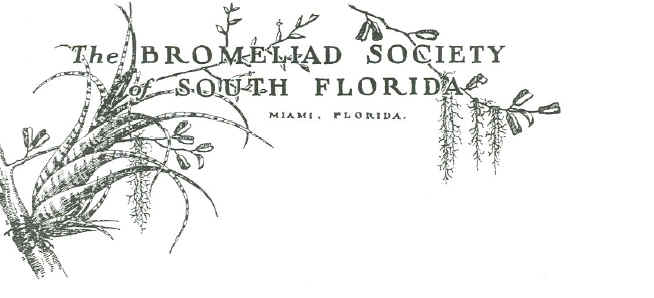|
What are Bromeliads?
These fascinating tropical American
natives come in a wonderful variety of sizes,
shapes and foliage colors.
They seem very strange and exotic, but one of our most
common fruits, the pineapple, is actually a bromeliad.
Many bromeliads are epiphytes (ie they live on other plants but do not
parasitize
those plants), living up in the forks of tree branches and surviving
mainly
on the moisture and nutrients they obtain from the air.
There are bromeliads for every situation -
some make very good indoor plants, while others can be quite spectacular
grown in the garden.
- Aechmea:
The plants in this genus are mostly epiphytic. One of the best
known is Aechmea fasciata or 'Silver King', which has long lasting,
pretty pink flowers and is often used as an indoor plant.
- Ananas:
The commercially grown pineapple, Ananas comosus is a member of
this
genus.
- Billbergia:
There are around 60 species of Billbergia, which are colorful and
well suited to growing in the garden around the base of trees. They
clump up
quickly to form good flower displays, although the
inflorescence (flower head) on some species is short lived.
- Cryptanthus:
This is a terrestrial group from Brazil, which needs plenty of room
for root development. They are best suited to warm climates.
- Vriesea:
Plants in this genus have interesting and varied foliage, and sword
like eye-catching flowers. They are easy to grow and are good
bromeliads for beginners to try.
- Tillandsia:
True air plants, tillandsias range in size from the tiny T. bryoides
(1cm or 0.4") to the giant T. grandis which can grow up to 3 meters (9') tall. Also in this group is T. usneoides, commonly known
as old man's whiskers or Spanish moss, which looks like spider webs
hanging from the trees. Apart from its ornamental
uses, this material
can be used for padding in upholstery.
Where most people in North America require green houses to grow their
Bromeliads, we here in ZONE-10 can grow them in our backyards, without the
threat of
frost
(usually). This makes South Florida Bromeliad Heaven.
|
When we consider
planting Bromeliads in our garden, we need to choose a location.
In Dr. Jeff Block's
program (May 2009), he showed that you
need to remember bromeliads
don't just grow in pots, planters or in the ground. Some grow up in or just
mounted on
the trees. Good placement allows you to enjoy your plant's best features. Other
plants -
orchids and ferns, compliment your Bromeliads.
In our area, we have many Orchid groups to choose from. But there is only one
Fern
Society. If you are interested in ferns to go in your garden along with your
bromeliads,
check out the
Tropical Fern & Exotic Plant Society web site at www.tfeps.org.
|
